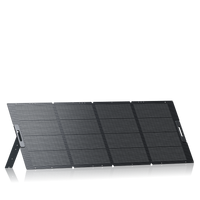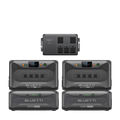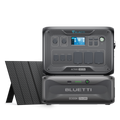Your cart is empty
Shop our productsSingle-Phase and Three-Phase power supplies are two distinct types of electrical power supplies used in a variety of applications. A proper understanding of the differences between these two types of power supplies is essential for anyone who needs to use them in their work. This article will provide an overview of the differences between Single-Phase and Three-Phase power supplies, as well as provide an analysis of the advantages and disadvantages of each type. With this information, anyone looking for a power supply can make an informed decision and choose the right power supply for their specific needs.
What Is a Single-Phase Power and Its Features?
Single-phase power is a type of electrical system commonly used in homes, businesses, and industrial applications. It is a type of electrical power supply that typically consists of two conductors—a live wire and a neutral wire—and uses alternating current (AC). It is commonly used to power light bulbs, motors, and other electrical appliances. Single-phase power is also used to feed three-phase power systems.
Single-phase power is advantageous because it is relatively inexpensive and easy to install and maintain, especially when compared to three-phase systems. It also allows flexible wiring since power can easily be routed to one or multiple locations. Additionally, it is more suitable for smaller loads.
A typical single-phase power system consists of three components: a power source, a load, and wiring. The power source can be a generator, transformer, or utility company, while the load is anything that consumes the power, such as an electric motor, a light bulb, or a heater. Wiring is the link between the power source and the load.
The three main features of a single-phase power system are its voltage, current, and power. The voltage of the system is the difference in potential between the two conductors (live wire and neutral wire). The current is the amount of electrons that flow through the system between the two conductors. the power is the amount of energy consumed by the load.
Single-phase power is also extremely reliable and simple. With fewer components, a single-phase system is less prone to failure than a three-phase system and is also easier to maintain.
single-phase power is an economical and reliable power system for residential, commercial, and industrial applications. Its simple design and ease of maintenance make it an ideal choice for many applications.

Advantages And Disadvantages Of Single Phase Power Supplies
Advantages Of Single Phase Power Supply:
Single phase power supplies are generally used for applications that require up to about 15KW of power. This type of power supply is relatively inexpensive and easy to operate. It is also very reliable, since there is no need to use a motor generator and therefore the possibility of a power failure is greatly reduced. Additionally, it is relatively small and lightweight, making it suitable for use in places where space is limited. The configuration of a single phase power supply is also relatively simple and straightforward.Disadvantages Of Single Phase Power Supply:
One of the main disadvantages of single phase power supplies is that they are limited concerning the power they can provide. As mentioned previously, they are not suitable for applications that require more than 15KW of power, making them unsuitable for commercial operations. Additionally, single-phase power supplies tend to be more prone to power losses than three-phase supplies, as the load is unequally distributed between the two wires. Furthermore, single-phase power supplies are generally more susceptible to voltage fluctuations, as the output voltage is not always consistent. As a result, they are less efficient than three-phase supplies.
What Is a Three-Phase Power and Its Features?
A three-phase power supply is a power system that uses three alternating current (AC) circuits which are 120° out of phase with each other. Power is generated with three distinct voltage phases, each phase being 120° offset from the other two phases. This power delivery method is more efficient than single-phase and is commonly used for industrial and commercial applications because of the increased power capacity and efficiency.
The three-phase power system is usually controlled by a main switchboard, or switchgear panel, which houses the breakers and circuitry necessary to power three or more phases. It is also commonly used in large electrical motors, electrical welding, and large power equipment, as well as in residential applications where lighter loads can be powered. Three-phase power delivery is a preferred choice for some equipment as it has a higher power factor and efficiency than single-phase power.
The features of a three-phase power supply are very attractive to large-scale industrial and commercial applications. Three-phase power offers a much higher power capacity than single-phase power, and it is much more efficient. Three-phase power can also offer a more balanced power flow, eliminating the need for a load balancer. Three-phase power also requires less maintenance than single-phase power, and increases system reliability.
In addition to higher power capacity and efficiency, three-phase power also offers greater safety, as it is much less likely to be affected by voltage sags or surges. This is due to the fact that three-phase power delivery uses equal voltage for each of its three phases, meaning that more energy can be safely transferred. Additionally, three-phase power is less likely to be affected by harmonic distortion, as it has a much higher power factor.
three-phase power is more efficient and reliable than single-phase power, making it the preferred choice for large-scale industrial and commercial applications. With its increased power capacity and efficiency, as well as its ability to offer a more balanced power flow, three-phase power is an ideal choice for powering a variety of heavy-duty electrical applications.
>Advantages & Disadvantages of Three Phase Power Supply
The three-phase power supply is a type of electrical power supply that is widely used in industrial and commercial applications. It is a reliable, efficient and cost-effective power source for many applications. Three-phase power is created by three alternating currents that are offset by one-third a cycle, this allows for a smooth delivery of current and reduces the amount of harmonics in the system. Three-phase power provides a greater power output than single-phase power, and also is much more efficient. It can also be used for long distances, as it can maintain high voltage levels over large industrial spans.
The advantages of three-phase power include its high power output, its ability to maintain higher voltage levels over large distances, and its excellent efficiency. With three-phase power, it is possible to achieve a much higher power output compared to single-phase power. This makes it ideal for large industrial applications that require large amounts of power. Another advantage of three-phase power is its ability to maintain higher voltage levels over large distances. This allows for large industrial applications to operate without the need to invest in costly long-distance transmission infrastructure.
The main disadvantage of three-phase power is its overwhelming complexity. It requires multiple circuit components to operate correctly, and if a component fails, the entire system can be disrupted. This complexity also requires a great deal of technical knowledge to install, maintain and manage properly. Three-phase power can also be more expensive to purchase than single-phase power, and the components needed to install and maintain it can be quite costly.
three-phase power is a reliable, efficient and cost-effective power source for many industrial and commercial applications. Due to its complexity and cost, it may not be the best option for smaller applications, but for large industrial applications, it is an excellent choice. The advantages of three-phase power include its high power output, its ability to maintain higher voltage levels over large distances, and its excellent efficiency.

Single-Phase Vs. Three-Phase Power Supply
Single-phase and three-phase power supplies are two of the most common forms of electrical power delivery systems used in the world today. Single-phase power is widely used in homes and small businesses, while three-phase power is more common in industrial and commercial facilities. The main difference between the two is in the number of lines used to deliver power. Single-phase power uses one line, while three-phase power uses three lines. Each line carries a different voltage, and the power supply is generally the same for both types.
For single-phase power, the voltage is usually around 120 volts, while the voltage for three-phase power is typically 208 to 480 volts. The differences in voltage can often mean the difference between being able to successfully operate electrical equipment or not. Three-phase power is also more efficient than single-phase power, as it allows more current to be delivered in the same amount of time. This makes three-phase power ideal for large industrial and commercial applications.
Single-phase power supplies also tend to be less expensive to install and maintain. This is because they require fewer components and can be installed in locations where three-phase power is not available. Single-phase power supplies are also easier to wire, making them preferred in locations where wiring is difficult.
both single-phase and three-phase power supplies can be used to reliably power a variety of electrical devices. Which type of power supply you need will depend on the amount of power needed, the voltage requirements, and the location of the power supply. By taking these factors into consideration, you can choose the power supply that best meets your needs.
Difference Between Single Phase and Three Phase Power
Single phase and three phase power are two of the most common power supplies used in homes and businesses. Single phase power is often used for smaller appliances and to power lights, while three phase power is designed for heavier items such as industrial equipment and machines. The difference between the two power supplies comes down to the way the electricity is generated and distributed.
Single phase power is generated from a single source, such as a transformer. This electricity supply is generated from a single voltage source and is usually wired as a single line or two-wire system. This type of power supplies is most commonly used in domestic applications and is limited to around 200 amps. In contrast, three phase power is generated from three voltage sources, which are usually wired in a three-wire system. This type of power supply is used in industrial environments since it can provide higher amperage and is more suited for operating large machines.
The other main difference between single phase and three phase power is the way the electricity is distributed. Single phase power is distributed in an alternating current (AC) form, while three phase power is distributed in a three-phase AC form. The alternating current in a single phase system causes one half of the cycle to be positive and one half to be negative. In contrast, the three phase system generates three alternating currents in which the voltage level and the cycle timing of each of the three phases vary. This allows three phase power to more efficiently distribute electrical power by having multiple power sources.
Single phase and three phase power is used to power a wide variety of electrical systems. Although single phase power is more suitable for domestic applications, three phase power is more commonly used in industrial settings. By understanding the differences between the two power supplies, it is possible to determine which system is better suited for a particular application. Furthermore, the installation and maintenance of three phase systems require more expertise and tend to be more expensive than single phase installations.
1. What is the difference in cost between a single-phase and three-phase power supply?
The cost difference between single-phase and three-phase power supplies is significant and highly dependent on the application and environment. Single-phase systems are generally less expensive, but they may not be suitable for large industrial and commercial applications where three-phase power supplies are needed. Three-phase systems require a higher initial investment, but their efficiency in larger applications can make up for the cost difference and offer a more reliable form of power. Additionally, the cost of installation is usually higher with a three-phase system due to the complexity of the wiring and the equipment needed to run it. In short, single-phase systems are suitable for small residential applications, while three-phase systems are better suited for larger industrial and commercial applications.
2. What are the advantages of using three-phase power supplies over single-phase power supplies?
The advantages of using three-phase power supplies over single-phase power supplies are numerous. Firstly, three-phase power supplies are more efficient than single-phase power supplies, offering up to 15% more efficiency in power delivery. Secondly, three-phase power supplies provide superior power quality. They are capable of delivering a much more consistent power than single-phase power supplies. Thirdly, three-phase power supplies have a much lower electrical noise than single-phase power supplies, eliminating the need for additional noise shielding and filtering components. Fourthly, three-phase power supplies are less expensive to install and maintain, as they require fewer components than single-phase power supplies. three-phase power supplies are generally more reliable than single-phase power supplies, as they have the ability to self-correct for any faults in either of the three lines. All in all, three-phase power supplies offer higher efficiency, better power quality, superior noise performance, increased reliability, and lower cost of ownership than single-phase power supplies.
3. What types of applications require a three-phase power supply?
Three-phase power supplies are typically used in applications where more power or higher voltage is needed than what can be provided by a single-phase power supply. These applications can include industrial equipment, such as industrial machines, as well as larger commercial establishments, such as hospitals or airports. These power supplies are also often used to power lighting systems. Additionally, three-phase power can be used to provide energy to motors with higher power ratings, such as those used in pumps, fans, and elevators. Three-phase power supplies are also used in welding devices, because they can provide enough voltage to create an electric arc between the two electrodes. Lastly, three-phase power supplies are used in high-capacity generators, such as those found in power plants. All of these applications require a power supply that can deliver higher voltage or larger amounts of power than what a single-phase power supply can provide.
4. How does the complexity of installation and maintenance differ between single-phase and three-phase power supplies?
The complexity of installation and maintenance of single-phase and three-phase power supplies varies significantly. Since single-phase power supplies require only one line to transmit power, they are much easier to install than three-phase power supplies, which require three lines. However, single-phase power supplies also lack the ability to provide large amounts of power, so they are more limited in their applications. On the other hand, three-phase power supplies are able to provide significantly more power, but they are much more complex to install. This is because each phase of the power supply needs to be perfectly balanced in order to ensure that the system is working properly. Additionally, due to the complexity of three-phase power supplies, they require more frequent and specific maintenance in order to keep them functioning properly. This includes things such as monitoring phase voltages and currents, and ensuring that the system is always balanced. single-phase power supplies are easier to install, but they are limited in the amount of power that they can provide. On the other hand, three-phase power supplies provide larger amounts of power, but come with a much higher installation and maintenance cost.
5. What are the safety considerations when using single-phase and three-phase power supplies?
Safety Considerations with Single-Phase and Three-Phase Power Supplies
When using single-phase and three-phase power supplies, there are a number of safety considerations to be aware of. Single-phase power supplies can carry high currents which can be hazardous if not handled properly. It is important to ensure that the voltage and current are properly matched to avoid any electric shock. Three-phase power supplies require additional safety considerations because of the complexity of the system. When handling three-phase power, it is important to consider the potential of a phase-to-phase fault, as well as the potential for a phase-to-ground fault. Furthermore, it is also important to use properly rated circuit breakers and fuses, as well as wear protective clothing when handling any type of power supply. Additionally, all electrical connections should be properly insulated to minimize any risk of shock. it is essential to adhere to the manufacturer’s safety protocols when using any type of power supply.The choice between single-phase and three-phase power supplies largely depends on the electrical loads you are working with. While single-phase power is sufficient for many residential and small commercial applications, three-phase power is a more effective option for larger demands. In addition, three-phase power is more efficient for large industrial and commercial applications. Consider the size of your application and its power requirements when choosing between a single-phase and three-phase power supply. If you opt for the latter, make sure you have a reliable and knowledgeable supplier. As with all electrical components, safety should be of utmost importance. Be sure to follow all safety protocols and instructions from your supplier before beginning any project.
Shop products from this article
Be the First to Know
You May Also Like

How to Pay Your Duke Energy Bill: A Comprehensive Guide

How Many Amps Does an Electric Water Heater Use? (2025)

Best Camping Games to Make Your Adventure Unforgettable
Camping happens to be the only way one can relax in nature and catch up with buddies and family while indulging in some of the most memorable activities. Besides stories...






































































































































































































































